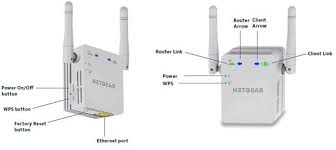In recent years, Scratch programming language has emerged as a revolutionary tool for introducing children and beginners to the world of coding. Developed by the MIT Media Lab, Scratch is a visually engaging, block-based language that allows users to create interactive stories, animations, games, and more, without needing prior coding experience. Its simplicity, coupled with powerful learning potential, has positioned Scratch as a staple in educational technology.
This article explores the essence of Scratch language programming, its application in various educational settings, and why it’s an excellent choice for novice programmers and educators alike.
What is Scratch Language Programming?
Scratch is a block-based visual programming language primarily designed for younger learners, though its ease of use makes it suitable for all ages. Through its drag-and-drop interface, Scratch introduces foundational programming concepts, such as loops, variables, and conditional statements, without overwhelming the user with complex syntax. Users build code by snapping together blocks that represent various functions and commands, creating a fun and accessible way to learn coding fundamentals.
Scratch’s emphasis on storytelling and game creation promotes creativity, critical thinking, and problem-solving skills. It allows learners to see real-time results of their coding efforts, encouraging a trial-and-error approach that is central to mastering programming.
Why Scratch is Ideal for Beginners
-
Intuitive and Visual Design: Scratch’s visual programming approach breaks down complex concepts into manageable blocks. This block-based approach reduces the intimidation factor often associated with traditional text-based programming languages.
-
Immediate Feedback: As users build their projects in Scratch, they receive instant feedback through real-time project previews. This helps them understand cause-and-effect in coding, which is essential for solidifying knowledge.
-
No Prior Knowledge Required: Scratch requires no previous coding experience, making it ideal for children, teens, and adults who are new to programming. Its simplicity ensures learners can jump in right away, achieving impressive results from the start.
Core Features of Scratch Language Programming
1. Block-Based Interface
Scratch’s hallmark feature is its block-based coding system. This interface consists of colored code blocks that represent different commands, such as motion, looks, sound, and control. By dragging these blocks into the workspace and snapping them together, users create complex sequences without needing to memorize specific syntax.
- Blocks Categories: Scratch blocks are categorized by function, including motion blocks (for movement), looks blocks (to control visual appearance), and control blocks (for loops and conditionals). Each block is color-coded for easy navigation, simplifying the coding process.
2. Creative Freedom with Sprites and Backgrounds
Scratch projects are built around sprites (characters or objects) and backgrounds. Users can customize these elements or import their own, providing a platform for imaginative storytelling and experimentation.
-
Sprite Customization: Scratch allows users to design their own sprites or select from a library. This feature fosters creativity, as learners can animate their stories or games with unique characters.
-
Backdrop Design: In addition to sprites, users can set up multiple backgrounds, enhancing the storytelling aspect of Scratch. This also teaches foundational skills in design and animation.
3. Built-In Media and Sounds
With Scratch, users can incorporate audio effects, soundtracks, and recording capabilities. These features are particularly beneficial for learners interested in creating interactive experiences or games, as they enable projects to feel more dynamic and engaging.
- Audio Blocks: Scratch provides audio blocks for adding sound to projects, ranging from pre-loaded effects to custom recordings. This enriches the project’s interactivity, contributing to user engagement.
4. Variables and Control Structures
While Scratch is designed for simplicity, it does include core programming concepts like variables, loops, and conditional statements. These elements introduce young learners to computational thinking, laying the groundwork for more advanced programming in the future.
- Control Structures: Scratch offers if-then statements and looping constructs that allow users to control the flow of their programs. This feature teaches the essentials of logical thinking and decision-making in coding.
Educational Benefits of Scratch Programming
-
Enhances Problem-Solving Skills: Scratch encourages users to think logically and break down complex problems into smaller, manageable steps. This approach is fundamental to developing effective problem-solving skills that are transferable beyond programming.
-
Fosters Creativity and Innovation: By allowing users to create their own projects from scratch, the language promotes creative expression. Users can experiment with ideas, helping them develop a creative approach to problem-solving.
-
Collaboration and Community Learning: Scratch has a robust online community where users can share their projects, receive feedback, and collaborate. This fosters a sense of community and teamwork, encouraging learners to learn from each other’s work.
-
Prepares for Advanced Programming: The fundamental skills learned in Scratch, such as using variables, understanding loops, and recognizing conditionals, serve as a stepping stone to more complex programming languages like Python or JavaScript.
Real-World Applications of Scratch Programming
Scratch programming isn’t limited to classroom settings; it has a range of real-world applications:
-
Game Design: Many users create simple games using Scratch, applying logic and decision-making to make interactive experiences.
-
Storytelling and Animation: Scratch is a powerful tool for crafting digital stories, making it popular in language arts and creative writing classes.
-
Educational Simulations: Educators can use Scratch to develop simulations that help students visualize and understand scientific concepts, such as animal behavior, ecosystems, and even mathematical problems.
Getting Started with Scratch: A Step-by-Step Guide
To begin programming in Scratch, follow these steps:
-
Create an Account: Sign up for a free account on the Scratch website, which will allow you to save and share your projects.
-
Explore the Interface: Familiarize yourself with Scratch’s interface, including the block palette, sprites panel, and stage where your project comes to life.
-
Choose or Design Sprites and Backdrops: Select sprites and backgrounds from Scratch’s library or design your own.
-
Start Building with Blocks: Begin adding blocks to create movement, change looks, add sound, and more. The possibilities are endless!
-
Test and Debug: Run your project to see how it functions. Experiment with different blocks, adjust their sequence, and troubleshoot to refine your creation.
-
Share with the Scratch Community: Once your project is complete, share it with the Scratch community and receive feedback from other users.
Advanced Scratch Techniques
1. Using Broadcast Messages
Broadcast messages allow sprites to communicate with each other, making Scratch projects more interactive and dynamic. For example, a sprite can send a message when it reaches a certain point, triggering actions from other sprites in response.
2. Cloning Sprites
Cloning enables users to create multiple copies of the same sprite, adding complexity to games and animations. For instance, in a game, a sprite could clone itself as an obstacle, making gameplay more challenging.
3. Custom Blocks
Custom blocks allow users to create reusable code sequences, enabling them to build projects more efficiently. This teaches modular programming, a core concept in many coding languages.
Why Choose Scratch Programming for Education?
Scratch is a highly accessible platform that aligns with 21st-century learning goals. It enables students to develop essential skills such as problem-solving, creativity, and collaboration. Furthermore, Scratch aligns with STEM (Science, Technology, Engineering, and Mathematics) initiatives, preparing students for future careers in technology.
Conclusion
Scratch programming language offers a revolutionary approach to learning coding. Its visual, block-based system and focus on creativity make it an ideal starting point for young learners and beginners. With Scratch, users can develop games, tell stories, and design animations while building foundational programming skills. The educational benefits are immense, and Scratch’s ease of use and engaging interface ensure a fun, productive learning experience




